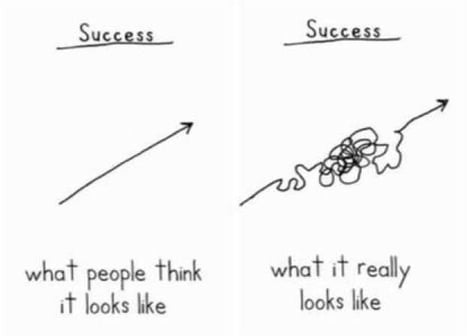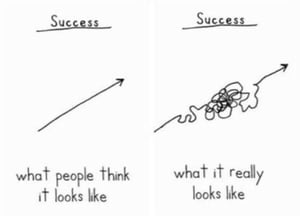A post-pandemic world means permanent changes
While the end of the coronavirus pandemic is in sight, the truth is that it has fundamentally and permanently changed how most professionals work. The days of going into the office five days a week are over for many employees worldwide. While this shift is exciting in many ways, it can also be incredibly challenging.
The new world of remote work means we have all had to learn how to work differently — regardless of your industry or job title. For me, this period of adjustment occurred while working on a large, high profile Microsoft software product launch that spanned across teams and brought several products together under one family brand.
Running a product launch isn’t generally simple or straightforward in the first place, but remote work has added layers of complexity to consider.
How do I connect with a new team and managers when I’ve never met them in person?
How do I get the time I need with them while also minimizing virtual meetings on their already-packed calendars?
How do I help to create a smooth launch during a time that feels new, uncertain, and unstable?
Along the way, I discovered several approaches that could help guide others, whether they are running a launch or working on another type of project. My hope is that in this blog, I can share the key learnings I picked up along the way that might help others as they navigate complex projects in the new world of work.
1. The value of authenticity
My first challenge was building trust remotely with my team and managers. Especially while many of us are working from home and aren’t getting the opportunity to communicate with folks in person, building that connection requires more thought and effort than usual.
I’ve never been the type to crack a joke on the first call like some of the incredibly socially skilled managers I’d worked with in the past. In bringing these feelings up to my managing director at the firm, I received some of the best career advice I’ve ever gotten: be authentic. It’s simple, but you don’t need to force it! If you show up as a genuine person, trust and rapport will grow naturally.
The truth is, there’s a level of personal connection that’s not possible right now — and might look quite different in the future than it did in the past. So don’t be too hard on yourself and set realistic expectations for yourself regarding rapport with your teams and managers. For me, one of the best and easiest ways to build genuine connections is being consistent — people naturally begin to trust your word and your work.
2. Helpful reminders of humanity
Another easy way to build rapport and connection is an office tradition most of us probably didn’t think twice about pre-pandemic. (I for one took it for granted). Those five-minute conversations we have while we make our coffee or pass someone on the way to a conference room are so important.
Creating space for those moments helps me remember that the people on my team aren’t just Microsoft employees, they are people with lives outside of work. In the few minutes at the beginning or end of meetings, ask folks how their kid’s soccer game went or about their weekend plans and share yours.
It seems so simple — but it works! We’re humans, and even the most introverted of us are built for moments of social interaction and connection.
3. Pivoting on a dime: it’s all about your mindset
It's hard to work in the consulting industry and not be a bit of a control freak. But in any broad project with lots of moving parts, it’s not always to your benefit to be too attached to the current plan.
I’ve been reminded time and again to control what I can and be flexible with what I can’t, which has become even more obvious with the uncertainty of the pandemic. The reality is decisions are harder to make under uncertainty, and the plan will probably change 100 times.
Throughout the project I worked on, launch dates changed several times and the product pivoted significantly, including a renaming/rebranding effort that spanned hundreds of deliverables, among other adjustments. Instead of getting stuck on what changed, I learned to instead ask myself how I could support my team and managers through the new changes.
When details are foggy, if you can help a team create stability and clarity through a chaotic time to determine their next steps, you can build trust and appreciation. Eventually, you’ll become a go-to person for your teams and stakeholders.
4. Non-linear progress is still progress
Whether it’s a stakeholder conversation, a deliverable, or an entire workstream, another lesson I’ve learned is that progress is often not linear, particularly with a new product launch — especially with the move to remote work. There will be times that you sink weeks into a certain workstream or deliverable that ends up retired or completely changed. That’s okay.

Time spent learning is never wasted. As disheartening as “lost work” feels, it helps to recognize that the work you have done will help frame the evolution and new direction of your work.
For example, I have written newsletters and datasheets (among other things) that were not used as the launch shifted. After a couple of these experiences, I realized that I had gained a ton of knowledge about the product from creating the deliverables.
Somewhere along the line, I transitioned from someone who understood only the basics to someone who could explain to others the product benefits and functionality in detail. My knowledge had completely expanded and shifted, which allowed me to continue to do my job better.
5. Learn what you can, ask questions when you need to
Lastly, remember to be patient with yourself. On a new launch, a new team, or a new project, you won’t be an expert on day one. Learn as much as you can by leveraging the resources that are available to you. Read through archived materials or poke around online.
I learned to find spaces to ask questions at specific times, so I wasn’t bombarding managers or team members with questions throughout the week. Especially now (and likely moving forward), calendars are packed with virtual meetings because we’re not getting the chance to have hallway conversations on the way to grab a coffee. At the beginning or end of a meeting with your manager or project lead, bring a few questions that you couldn’t answer on your own. This gives you the opportunity to knock out a few questions at a time without being disruptive to the workflow of others.
Also ask yourself whether your question is something you need to know right now or if it’s okay to learn along the way. One strategy I employed quite often with unanswered questions was taking an educated guess and then actively listening for the answer to that question to come up naturally in subsequent calls.
In uncharted waters, be the lighthouse
With all the change and adjustment that’s happened over the past year, it’s normal to feel a little unsure of where the ship is headed. My learnings can absolutely be applied looking forward, as we’ll be navigating an unknown post-pandemic working world together.
Being authentic, having an agility mindset, and learning on your own are still important skills that can make your project — or a launch like mine — go smoothly. While many of us may never completely return to being in an office full time, we can learn to adapt and function in this new reality. While our work might look different in the future, what remains is the attitude and understanding you bring to the table.
Regardless of whether you’re working remotely, in person, or some combination, I hope this blog has been helpful to everyone navigating the new world of work.

